|
|
| Übersicht – Contents: | |
|
|
| Übersicht – Contents: | |
Flaggen – Flags: |
|
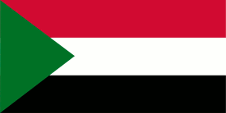 |
seit/since 1970, National-, Staats- und Handeslflagge – national, state and merchant flag, Seitenverhältnis – ratio 1:2, Quelle/Source, nach/by: Flags of the World   |
 |
Flagge der Streitkräfte – flag of the Defence Forces, zweifelhaft – doubtful, Seitenverhältnis – ratio 1:2, Quelle/Source, nach/by: Flags of the World |
 |
Marineflagge – naval flag, Seitenverhältnis – ratio 1:2, Quelle/Source, nach/by: Wikipedia (EN) |
 |
Flagge der Luftwaffe – flag of the Air Force, Seitenverhältnis – ratio 1:2, Quelle/Source, nach/by: Flags of the World |
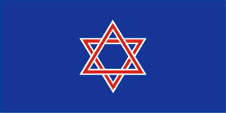 |
Flagge des Zoll – customs flag, Seitenverhältnis – ratio 1:2, Quelle/Source, nach/by: Flags of the World |
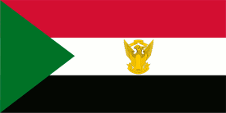 |
Flagge des Präsidenten – flag of the President, Seitenverhältnis – ratio 1:2, Quelle/Source, nach/by: Flags of the World |
historische Flaggen – historical Flags: |
|
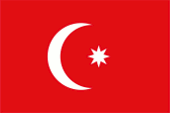 |
ca. 1820–1867, Flagge Ägyptens (Osmanisches Reich) – flag of Egypt (Ottoman Empire), Quelle/Source, nach/by: Flags of the World |
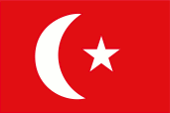 |
1867–1882, Flagge Ägyptens (Osmanisches Reich) – flag of Egypt (Ottoman Empire), Quelle/Source, nach/by: Flags of the World |
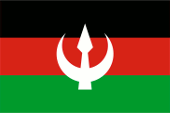 |
1882–1898, Flagge des Mahdi-Staats – flag of the Mahdi State, Quelle/Source, nach/by: Wikipedia (AR), Flags of the World |

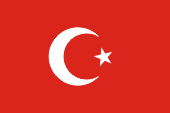 |
1899–1914, Flaggen Großbritanniens und Ägyptens (gemeinsam zu hissen) – flags of United Kingdom and Egypt (to hoist together), Quelle/Source, nach/by: Flags of the World |

 |
1914–1922, Flaggen Großbritanniens und Ägyptens (gemeinsam zu hissen) – flags of United Kingdom and Egypt (to hoist together), Quelle/Source, nach/by: Flags of the World |

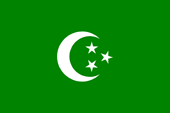 |
1922–1956, Flaggen Großbritanniens und Ägyptens (gemeinsam zu hissen) – flags of United Kingdom and Egypt (to hoist together), Quelle/Source, nach/by: Flags of the World |
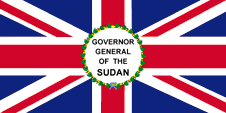 |
1899–1956, Flagge des britischen Generalgouverneurs – flag of the British Governor General, Seitenverhältnis – ratio = 1:2, Quelle/Source, nach/by: Flags of the World |
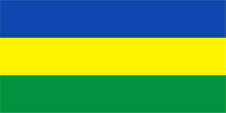 |
1956–1969, National-, Staats- und Handeslflagge – national, state and merchant flag, Seitenverhältnis – ratio 1:2, Quelle/Source, nach/by: Flags of the World |
 |
1956–1969, Marineflagge – naval flag, Seitenverhältnis – ratio 1:2, Quelle/Source, nach/by: Flags of the World |
| Die
heutige Flagge des Sudan wurde am 20.05.1970 offiziell gehisst. Sie zeigt
drei waagerechte Streifen in Rot, Weiß und Schwarz und ein gleichschenkliges
grünes Dreieck am Mast. Die Farben der Flagge scheinen definiert worden zu
sein, auch im HEX-Farbraum: Grün = HEX #007229, was Pantone 356 entsprechen
würde, Rot = HEX #D21034, was Pantone 186 entsprechen würde. Die Farben des
blau-gelb-grünen Vorgängermodells scheinen ebenfalls definiert, auch im
HEX-Farbraum, was verwunderlich ist, für eine Flagge der 50-er und 60er
Jahre des 20. Jahrhunderts: Blau = HEX #0F47AF, was Pantone 293 entsprechen
würde, Gelb = HEX #FFF500, was Pantone 803 entsprechen würde, Grün = HEX
#00923F, was Pantone 355 entsprechen würde. Zu Bedeutung oder Ursprung der
Farben gibt es mehrere Erklärungsvarianten: • Rot symbolisiert Fortschritt, Revolution und das Blut der Patrioten, Weiß Friedensliebe und Schwarz das Land selbst ("Sudan" bedeutet "Schwarz"). Das Grün des Dreiecks am Mast ist die Farbe des Islam, gilt aber auch als Symbol des Gedeihens. • Rot steht für Sozialismus, Weiß für Reinheit und Optimismus und Grün für Wohlstand. Schwarz steht wieder für das Land selbst ("Sudan" = "Schwarz"). • Die Farben sind diejenigen der Umma-Partei, eine der ältesten und einflussreichsten Parteien des Landes, die sich als Nachfolgerin der Mahdi-Bewegung betrachtet, mittlerweile jedoch in der Illegalität wirkt. • Der Farbenvierklang von Grün, Weiß, Schwarz und Rot ist ein speziell arabisches Farbsymbol, die Panarabischen Farben. Die (pan)arabischen Farben wurden während des 1. Weltkriegs, bei der Loslösung des Königreichs Hedschas vom Osmanischen Reich, durch den Scherifen Hussein von Mekka – aus dem Geschlecht der Haschemiden – als Farben der Arabischen Bewegung offiziell eingeführt. Als Vorlage diente die Flagge des Hedschas. Die Farben haben folgende Bedeutung: Rot ist die Farbe von Omar, dem zweiten Kalifen; Weiß steht für die Omajiaden, eine Kalifendynastie, die auf den fünften Kalifen Moawija I. zurückgeht; Grün steht für die Fatimiden, eine ismailitisch-schiitische Kalifendynastie, die auf den vierten Kalifen Ali zurückgeht; und Schwarz steht für die Abbasiden, eine Kalifendynastie, die auf den Kalifen Abbas I. zurückgeht. Rot ist außerdem die Farbe der Haschemiden, eine arabische Herrscherdynastie, die wahrscheinlich auf Haschim ibn Abd al-Manaf, den Großvater Mohammeds, zurückgeht. Grün ist außerdem die Farbe des Islam im Allgemeinen, und bezieht sich somit nicht nur auf die arabischen Länder. • Die Farbgebung der Flagge leitet sich von der Flagge Ägyptens ab, da sie weitgehend der 1952 von Nasser eingeführten arabischen Befreiungsflagge ähnelt. Die 1956 bei Erlangung der Unabhängigkeit angenommene Flagge war blau-gelb-grün waagerecht gestreift, wurde jedoch im Zusammenhang mit der Gründung der Demokratischen Republik am 25.05.1969 abgeschafft. Nach einer Ausschreibung wurde am 20.05.1970 die heutige Flagge angenommen. Die Flaggen der Luftwaffe und der Marine sind insofern bemerkenswert, weil sie als einzige Flaggen des Landes bis heute dem britischen Ensign-System folgen. Von einer schwarz-weiß-schwarzen Flagge der Streitkräfte wird berichtet. Die Präsidentenflagge hat dasselbe Aussehen wie die Nationalflagge, trägt jedoch in der Mitte des weißen Streifens das Wappen des Landes in Gold. Das Gebiet des heutigen Sudan und Südsudan wurde ab 1820 nach und nach von Ägypten erobert, wobei der Vizekönig immer noch der Hohen Pforte des Osmanischen Reiches unterstand, das blieb bis 1914 so. Mit dem beginn des Ersten Weltkriegs wurde dieses Unterstellungsverhältnis abgeschafft. Sich zeitlich überschneidend war Ägypten von 1882 von britischen Truppen besetzt worden, was 1899 in einer gemeinsamen Verwaltung des Sudan, als Anglo-Ägyptischer Sudan, gipfelte. Bis zur Unabhängigkeit wurden immer zwei Flaggen aufgezogen, die britische Flagge und die jeweilige ägyptische Flagge. |
The
current flag of Sudan was officially hoisted on 20th of May in 1970. It
shows three horizontal stripes in red, white and black and an isosceles
green triangle on the mast. The colours of the flag seem to have been
defined, also in the HEX colour space: green = HEX #007229, which would
correspond to Pantone 356, red = HEX #D21034, which would correspond to
Pantone 186. The colours of the blue-yellow-green predecessor also seem to
have been defined, also in the HEX colour space, which is surprising for a
flag of the 50s and 60s of the 20th century: Blue = HEX #0F47AF, which would
correspond to Pantone 293, Yellow = HEX #FFF500, which would correspond to
Pantone 803, Green = HEX #00923F, which would correspond to Pantone 355. There are several explanations for the meaning or origin of the colours: • Red symbolizes progress, revolution and the blood of patriots, white symbolizes love of peace and black the country itself ("Sudan" means "black"). The green of the triangle on the mast is the colour of Islam, but is also considered a symbol of prosperity. • Red stands for socialism, white for purity and optimism and green for prosperity. Black again stands for the country itself ("Sudan" = "Black"). • The colors are those of the Umma Party, one of the oldest and most influential parties in the country, which now sees itself as the successor to the Mahdi movement However, it works illegally. • The colour quadrad of green, white, black and red is a specifically Arabic color symbol, the Pan-Arabian colors. The (pan)Arab colors were officially introduced as the colours of the Arab movement during the First World War, when the Kingdom of Hejaz broke away from the Ottoman Empire, by Sherif Hussein of Mecca – from the Hashemid dynasty. The flag of the Hejaz served as a template. The colors have the following meaning: Red is the color of Omar, the second caliph. White represents the Umayyads, a caliph dynasty that dates back to the fifth caliph Moawija I. Green represents the Fatimids, an Ismaili-Shiite caliph dynasty that dates back to the fourth caliph Ali. Black represents the Abbasids, a caliph dynasty that dates back to Caliph Abbas I. Red is also the color of the Hashemids, an Arab ruling dynasty that probably goes back to Hashim ibn Abd al-Manaf, Muhammad's grandfather. Green is also the color of Islam in general, and therefore does not only refer to the Arab countries. • The color scheme of the flag is derived from the flag of Egypt, as it largely resembles the Arab liberation flag introduced by Nasser in 1952. The flag, which was adopted in 1956 when independence was achieved, was blue-yellow-green horizontally striped, but was abolished on the occasion of the the founding of the Democratic Republic on 25th of May in 1969. After a competition, the today's flag was adopted on 20th of May in 1970. The flags of the air force and of the navy are notable because they are the only flags in the country to follow the British ensign system to this day. A black-white-black flag of the armed forces is reported. The presidential flag has the same appearance as the national flag, but shows the coat of arms of the country in the middle of the white stripe, but in gold. The area of today's Sudan and South Sudan was gradually conquered by Egypt from 1820 onwards, with the viceroy still answering to the Sublime Porte of the Ottoman Empire, which remained the case until 1914. With the beginning of the First World War, this subordination relationship was abolished. Overlapping in time Egypt was occupied by British troops already in 1882, which culminated in a joint administration of Sudan in 1899 as Anglo-Egyptian Sudan. Until independence, two flags were always flown: the British flag and the respective Egyptian flag. |
| Quelle/Source: Die Welt der Flaggen, Wappen und Flaggen aller Nationen, Flaggen Wappen Hymnen, Flaggen-Atlas Erde, Wikipedia (EN), Volker Preuß | |
Wappen – Coat of Arms: |
|
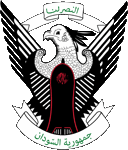 |
seit/since 1970, Wappen von Sudan – coat of arms of Sudan, Quelle/Source: Corel Draw 4 |
| Das heutige Staatswappen wurde 1970 eingeführt. Es zeigt einen Sekretär (afrikanischer Greifvogel), den Nationalvogel des Sudan. Er trägt auf der Brust einen Eingeborenenschild. Oberhalb des Vogels ein Spruchband mit dem Motto des Staates in Arabisch: "Al Nasr nila" → "Der Sieg ist unser". Auf den unteren Spruchband steht der Name des Landes, ebenfalls in Arabisch. |
The current national coat
of arms was introduced in 1970. It shows a Secretary (African bird of prey),
the national bird of Sudan. It bears a native shield on its breast. Above the bird is a banner with the motto of the state in Arabic: "Al Nasr nila" → "Victory is ours". On the lower banner is the name of the country, also in Arabic. |
| Quelle/Source: Die Welt der Flaggen, Flaggen Wappen Hymnen | |
Flugzeugkokarde – aircraft roundel: |
|
 |
1956–1970, Flugzeugkokarde – aircraft roundel Quelle/Source, nach/by Wikipedia (EN) |
 |
seit/from 1970, Flugzeugkokarde – aircraft roundel Quelle/Source, nach/by Wikipedia (EN) |
Landkarte – Map: |
Lage – Position: |
Landkarte des Landes – Map of the Country: |
interaktive Landkarte des Sudan |
|
|
| Zahlen und Fakten – Numbers and Facts: | |
|
|
|
|
|
|
|
|
|
|
|
|
|
|
|
|
|
|
|
3500 v.Chr.
· Nubisches Reich Kusch im Norden des heutigen Sudan 2600 v.Chr. – 1070 v.Chr. · der Norden des heutigen Sudan gehört zu Ägypten 300 v.Chr. – 300 n.Chr. · Nubisches Reich Meroë im Norden des heutigen Sudan 350 n.Chr. · Meroë zerfällt in drei Königreiche (Nobatia, Mukurra, Alwa) 600 · Nubien bekennt sich zum koptischen Christentum, in den Folgejahren islamische Attacken 1315 · Mukurra bricht unter dem Arabischen Ansturm zusammen 1504 · Alwa bricht unter dem Arabischen Ansturm zusammen ca. 1500 – 1700 · Reich der Fundsch im südlichen Sudan, der Norden wird von den ägyptischen Mameluken abhängig ca. 1620 · Darfur wird islamisiert 1805 · der albanische Offizier Muhammad Ali Pascha ergreift in Ägypten die Macht und installiert seine Dynastie, zunächst als Gouverneur, ab 1867 als Vizekönig (Khedive) im Auftrag der Hohen Pforte des Osmanischen Reiches 1820–1821 · Mohammed Ali von Ägypten erobert den Nordsudan (Nubien und Kordofan) 1823 · Gründung von Khartum durch die Ägypter 1863–1875 · Ismail Pasha von Ägypten erobert teilweise den Südsudan und Darfur (1874) 1875–1881 · die Ägypter versuchen den Sklavenhandel zu unterbinden 1881–1898 · antiägyptisch-klerikaler Mahdiaufstand unter der Führung des Mohammed Achmed, genannt Mahdi, Bildung des Mahdireiches 1882 · Großbritannien besetzt Ägypten 1885 · Tod des Mahdi, Nachfolger wird Chalifa Abdullahi 1888–1889 · das Mahdireich attackiert Äthiopien und erobert den Südsudan 1896 · Lord Kitchener, der britische Oberkommandierende der ägyptischen Armee, erhält den Auftrag gegen das Mahdireich vorzugehen 1898 · Schlacht von Omdurman, Lord Kitchener vernichtet das Mahdireich 1898 · Schlacht von Faschoda, Lord Kitchener schlägt in den Südsudan eingedrungene Franzosen zurück 1899 · der Sudan wird offiziell von Ägypten und Großbritannien gemeinsam verwaltet (Anglo-Ägyptischer Sudan) 1914 · in Ägypten wird das Osmanische Vizekönigreich abgeschafft, die Oberhoheit des Osmanischen Reiches endet, Proklamation des britischen Protektorats Sultanat Ägypten 1924 · britische Versuche den Norden und Süden des Sudan getrennt zu verwalten 1948 · erste Wahlen zu einer gesetzgebenden Versammlung 22.10.1952 · Ägypten und Großbritannien gewähren dem Sudan innere Selbstverwaltung 1955 · der christliche und animistische Südsudan befürchtet in einem unabhängigen Sudan eine nördliche islamische Dominanz und beginnt den zunächst 17 Jahre andauernden Bürgerkrieg 01.01.1956 · Ägypten und Großbritannien gewähren dem Sudan Unabhängigkeit, Republik Sudan 1958 · Militärputsch von General Ibrahim Abboud, Auflösung des Parlaments 1964 · General Abboud setzt eine Zivilregierung ein 1969 · Militärputsch von Muhammad Gaafur al-Numeiri, Auflösung des Parlaments, Verbot aller Parteien, Proklamation der Demokratischen Republik Sudan 1971 · kommunistischer Putschversuch scheitert 1972 · Abkommen von Addis-Abeba zwischen der Regierung des Sudan und der südsudanesischen Befreiungsfront, vorläufiges Ende des Bürgerkriegs im Süden, Gewährung von Autonomie für den Südsudan 1973 · neue Verfassung 1975 · Putschversuch der Nationalen Front mit libyscher Unterstützung scheitert 1983 · der Südsudan wird in drei separate Regionen aufgeteilt, Einführung des islamischen Rechts, der Bürgerkrieg im Süden bricht erneut aus 1984 · Verkündung des Ausnahmezustands 1985 · Militärputsch von General Abdul Rahman Swaredahab, Proklamation der Republik Sudan 1986 · Proklamation der Islamischen Republik 1989 · Militärputsch 1992 · Offensive gegen den Südsudan 1994 · Offensive des Südsudan gegen Regierungstruppen 1994 · der Beja Congress im Ostsudan beginnt mit dem bewaffneten Kampf 1996 · Etablierung einer Zivilregierung mit beratendem Charakter, Isolierung des Südsudan 1997 · erfolgreiche Offensive der südsudanesischen SPLA (Sudanesische Volksbefreiungsarmee) 1998 · neue Verfassung 12.12.1999 · Verkündung des Ausnahmezustands, Auflösung des Parlaments 2003 · Ausbruch des Darfur-Konflikts, Afrikanische Rebellen nehmen den Kampf gegen die arabische Regierung des Sudan auf, Regierungstruppen und Milizen vertreiben 2,5 Millionen Einwohner, 400.000 sterben 2004 · Friedensabkommen zwischen Darfur und Sudan scheitert 2005 · Friedensabkommen mit dem Südsudan, Ende der Kämpfe, Autonomie für Südsudan 2006 · Waffenstillstand, Friedensabkommen mit dem Ostsudan 2008 · erneut Kämpfe zwischen Sudan und Südsudan 09.01.2011 · Beginn einer mehrtägigen Volksabstimmung zur Unabhängigkeit im Südsudan 09.07.2011 · der Südsudan erklärt seine Unabhängigkeit 2019 · Militärputsch, Ausnahmezustand 2021 · Militärputsch 2021 · Wiedereinsetzung einer zivilen Regierung 2022 · Aufhebung des Ausnahmezustands 2023 · Kämpfe zwischen den sudanesischen Streitkräften (SAF) und den Rapid Support Forces (RSF) |
|
3500 B.C.
· Nubian Empire of Qush in the north of the today’s Sudan 2600 B.C. – 1070 B.C. · the north of the today’s Sudan belongs to Egypt 300 B.C. – 300 A.D. · Nubian Empire of Meroë in the north of the today’s Sudan 350 A.D. · Meroë disintegrates into three kingdoms (Nobatia, Mukurra, Alwa) 600 · Nubia confesses to the Coptic Christianity, in the afteryears islamic attacks 1315 · Mukurra breaks down under the Arabian onslaught 1504 · Alwa breaks down under the Arabian onslaught ca. 1500 – 1700 · Empire of the Fundsh in the southern Sudan, the north becomes dependent from the egypt Mameluks ca. 1620 · islamization of Darfur 1805 · the Albanian officer Muhammad Ali Pasha seizes power in Egypt and installs his dynasty, initially as governor, and from 1867 as viceroy (Khedive) on behalf of the Sublime Porte of the Ottoman Empire 1820–1821 · Mohammed Ali of Egypt conquers the northern Sudan (Nubia and Khordofan) 1823 · foundation of Khartum by the Egyptians 1863–1875 · Ismail Pasha of Egypt conquers partially the southern Sudan and Darfur (1874) 1875–1881 · the Egyptians try to stop the slave trading 1881–1898 · anti-egyptian-clerical Mahdi revolt under the leadership of Mohammed Achmed, named Mahdi, formation of the Mahdi Empire 1882 · United Kingdom occupys Egypt 1885 · death of the Mahdi, successor is Chalifa Abdullahi 1888–1889 · the Mahdi Empire attacks Ethiopia and conquers the southern Sudan 1896 · Lord Kitchener, the British Supreme Commander of the egyptian army, gets the order to attack the Mahdi Empire 1898 · Battle of Omdurman, Lord Kitchener destroys the Mahdi Empire 1898 · Battle of Faschoda, Lord Kitchener strikes in southern Sudan invaded Frenchmen 1899 · Sudan is officially administered by Egypt and United Kingdom (Anglo-Egyptian Sudan) 1914 · in Egypt the Ottoman Viceroyalty is abolished, the suzerainty of the Ottoman Empire ends, proclamation of the British Protectorate of the Sultanate of Egypt 1924 · British attempts to administer separately the north and the south of Sudan 1948 · first elections to a legislative assembly 22nd of October 1952 · Egypt and United Kingdom grant interior self administration 1955 · the christian and animist South Sudan fears a northern and islamic dominance within an independent Sudan and starts the first of all for 17 years enduring civil war 1st of January 1956 · Egypt and United Kingdom grant the Sudan independence, Republic of Sudan 1958 · military coup d’état of General Ibrahim Abboud, dissolution of the parliament 1964 · General Abboud deploys a civil government 1969 · military coup d’état of Muhammad Gaafur al-Numeiri, dissolution of the parliament, prohibition of all parties, proclamation of the Democratic Republic of Sudan 1971 · attempted communist coup d’état fails 1972 · treaty of Addis-Abeba between the government of Sudan and the South Sudanese Liberation Front, temporary end of the civil war in the south, granting of autonomy for the South Sudan 1973 · new constitution 1975 · attempted coup d’état of the National Front with libyan support fails 1983 · South Sudan becomes divided into three separate regions, introduction of the islamic law, the civil war in the south breaks out again 1984 · proclaim of the state of emergency 1985 · military coup d’état of General Abdul Rahman Swaredahab, proclamation of the Republic of Sudan 1986 · proclamation of the Islamic Republic 1989 · military coup d’état 1992 · offensive against South Sudan 1994 · offensive of South against governmental troops 1994 · the Beja Congress in Eastern Sudan begins armed struggle 1996 · establishment of a civil government with consultatory character, isolation of South Sudan 1997 · successful offensive of the south sudanese SPLA (Sudanese People's Liberation Army) 1998 · new constitution 12th of December 1999 · proclaim of the state of emergency, dissolution of the parliament 2003 · outbreak of the Darfur Conflict, African rebels start the struggle against the Arabian government of the Sudan, governmental troops and militia exile 2,5 million residents, 400.000 perish 2004 · peace treaty between Darfur and Sudan fails 2005 · peace agreement with South Sudan, end the fighting, autonomy for South Sudan 2006 · ceasefire, peace agreement with Eastern Sudan 2008 · one more fights between Sudan and South Sudan 9th of January in 2011 · beginning of a multi-day referendum for independence in South Sudan 9th of July in 2011 · South Sudan declares its independence 2019 · military coup, state of emergency 2021 · military coup 2021 · reinstatement of a civilian government 2022 · repeal of the state of emergency 2023 · fightings between the Sudan Armed Forces (SAF) and the Rapid Support Forces (RSF) |
| Quelle/Source: Atlas zur Geschichte, World Statesmen, Wikipedia (EN), Volker Preuß |
| Der Name des Sudan leitet sich von der arabischen Bezeichnung "Bilad es-Sudan" ab. Das heißt "Land der Schwarzen" und bezeichnet eigentlich die ganze Region zwischen Sahara und dem afrikanischen Regenwald von West- bis Ostafrika. In der Antike und im Mittelalter hieß das Land "Nubien", benannt nach den Nubiern, einem afrikanischen Stamm der im Norden des Sudan am Nil lebt. | The name
of Sudan is derived from the Arabian denomination "Bilad es-Sudan". That
means "Land of the Black" and describes actually the whole region between
Sahara and the African rain forest from western to eastern Africa. In antiquity and in the middle ages the land was called "Nubia", named by the Nubians, an African tribe which lives in the north of Sudan on Nile River. |
| Quelle/Source: Handbuch der geographischen Namen | |